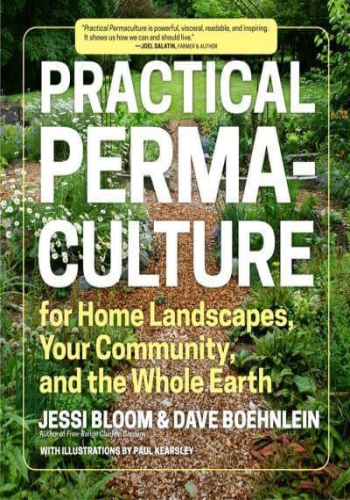Chapter 1: Principles of Permaculture
* Explains the 12 principles of permaculture and their importance in creating sustainable and resilient landscapes.
* Real example: Implementing multiple functions in one element, such as a food forest that also provides shelter for wildlife and erosion control.
Chapter 2: Design Process and Site Analysis
* Guides through the permaculture design process, from observation and analysis to implementation and monitoring.
* Real example: Observe water flow patterns on a site to design rainwater harvesting and swale systems to prevent erosion.
Chapter 3: Soil Management
* Discusses soil health and techniques for enhancing soil fertility and structure.
* Real example: Implementing a sheet mulching system to build up organic matter, suppress weeds, and improve soil structure.
Chapter 4: Water Management
* Explores water-wise practices, including rainwater harvesting, swales, and greywater systems.
* Real example: Installing rain barrels and a soakaway pit to collect and store rainwater for irrigation.
Chapter 5: Plant Culture
* Introduces the basics of plant selection, planting techniques, and plant guilds.
* Real example: Creating a companion planting scheme where tomatoes are grown alongside basil to enhance growth and repel pests.
Chapter 6: Animal Systems
* Discusses the benefits of integrating animals into permaculture systems, such as chickens for pest control and goats for vegetation management.
* Real example: Establishing a chicken coop and grazing area for rotational grazing to improve soil health and provide eggs.
Chapter 7: Energy and Structures
* Explores renewable energy sources and sustainable building techniques for permaculture landscapes.
* Real example: Installing solar panels for electricity generation and using recycled materials in the construction of a greenhouse.
Chapter 8: Community and Social Permaculture
* Emphasizes the importance of community involvement and collaboration in permaculture projects.
* Real example: Hosting workshops and community workdays to share knowledge and foster a sense of stewardship.
Chapter 9: Expanding Permaculture
* Encourages readers to apply permaculture principles beyond their own landscapes to create positive change on a global scale.
* Real example: Supporting permaculture projects in developing countries through volunteering or donations.







